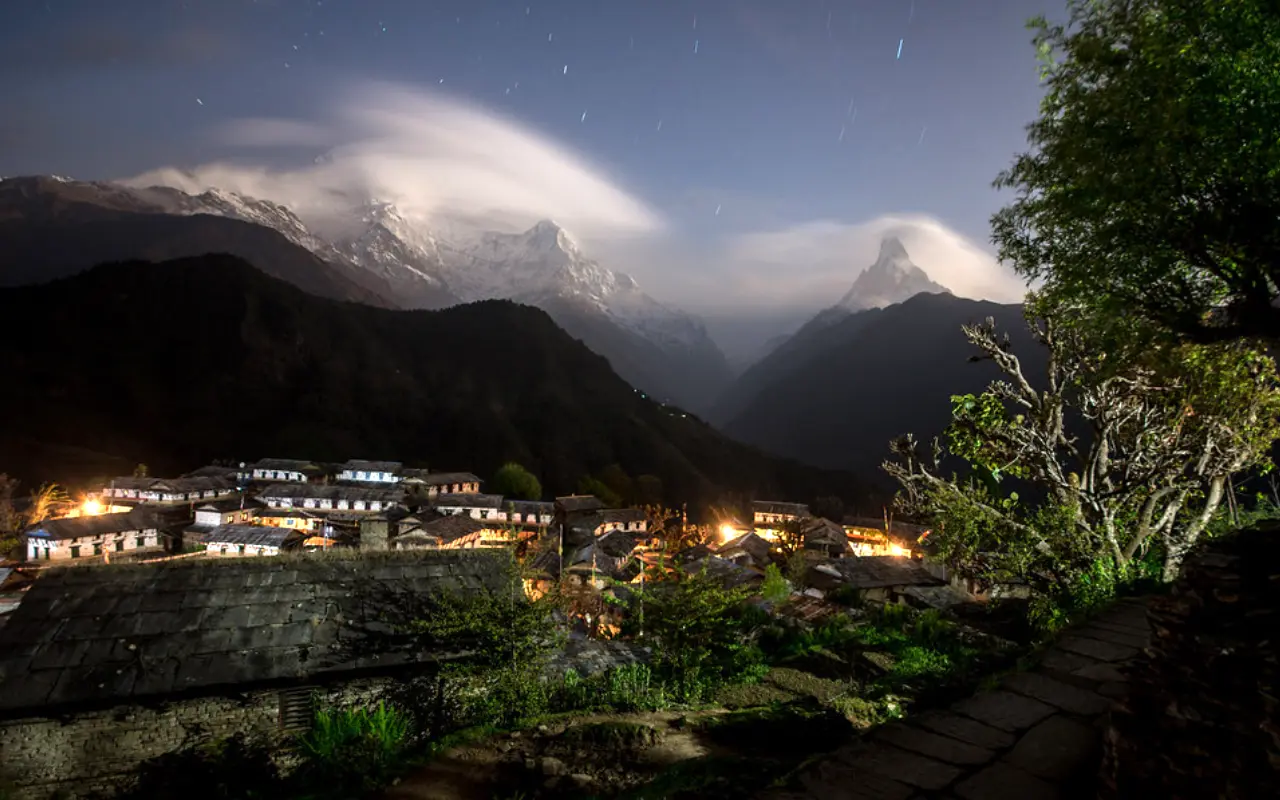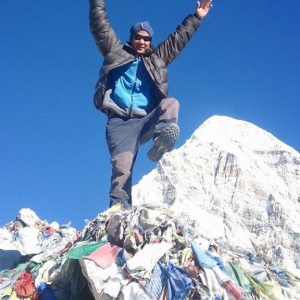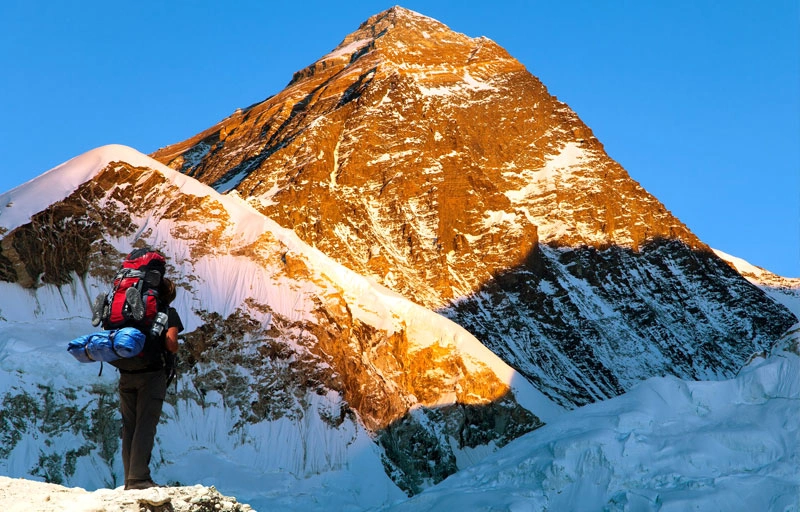Pokhara to Ghandruk Distance by Road and Trek: A Complete Guide
If you’re dreaming of a short yet stunning Himalayan escape, look no further than Ghandruk. This beautiful village in Nepal’s Annapurna region sits at around 2,012 meters and is famous for its warm Gurung culture, stone houses, and breathtaking views. From Ghandruk, you can see Annapurna South, Hiunchuli, and the iconic Machapuchare, also called Fishtail Mountain.
It is a quiet but energetic small village, which is one of the most familiar visits of the trekkers on the lower Annapurna trails. The Ghandruk trek is the most popular trek among travelers who want to see the Himalayan scenery but do not want to take long treks and strain themselves. That is why the distance between Pokhara and Ghandruk has been designed to be ideal for anyone who is starting trekking, a family, or with time constraints.

Ghandruk is easy to reach from Pokhara, which is Nepal’s adventure capital and gateway to the Annapurnas. The short Pokhara to Ghandruk distance means you can leave the busy lakeside city in the morning and enjoy village life by afternoon. You can get there by road or by trekking, depending on your schedule and preference.
The route is suitable for both short trips and longer treks that go even further into the mountains due to this flexibility. In case you desire to drive somewhere by using a jeep along the winding hills or you desire to walk by some waterfalls, and the stone steps of stone, this guide will enable you to plan your work in detail.
In this complete guide, you’ll learn how far the Pokhara to Ghandruk distance is by road and trail, how to travel, and what to expect on the way. You’ll find maps, routes, costs, permits, and helpful tips to make your Ghandruk trek smooth and memorable. Let’s get started on this short but beautiful adventure.
Where Is Ghandruk Located?
Ghandruk is a gorgeous old-fashioned village in the Kaski District of Gandaki province, Nepal. It is at an altitude of approximately 2,012 meters (6,601 feet) above sea level, being part of the conserved region, Annapurna Protection Zone. The Pokhara to Ghandruk distance is about 55–60 kilometers by road, making it one of the most accessible mountain villages from Pokhara.
This beautiful village is renowned for its profound Gurung culture and traditional hospitality. Ghandruk can be referred to as a living museum since the town is built of slate-ooled stone houses, borders of flowering plants, and serene courtyards where the locals congregate. Tourists may watch cultural programs, taste the home-cooked food of Gurungs, as well as learn about their traditional lifestyles.

One of the biggest highlights of Ghandruk is its spectacular scenery. Trekkers who cover the Pokhara to Ghandruk distance are rewarded with breathtaking views of Annapurna South, Hiunchuli, and the sacred Machapuchare, also known as Fishtail Mountain. The snow-capped peaks appear incredibly close, creating a picture-perfect Himalayan backdrop.
Ghandruk also serves as a key location in most of the well-traveled treks. It is the beginning or the ending of small hikes such as the Ghandruk trek itself or other longer treks such as Annapurna Base Camp and Ghorepani Poon Hill. The positioning is great since those who desire to experience the Himalayas in the minimum time can visit it.
For many travelers, the short journey from Pokhara means you can easily leave the busy city behind and reach this peaceful mountain village in just a few hours. Its convenient location, cultural richness, and stunning views make Ghandruk one of the most loved trekking villages in Nepal.
Distance from Pokhara to Ghandruk
How far is the actual distance between Ghandruk and Pokhara is one of the most frequently asked questions by any trekker before starting to plan a visit. The distance and the expectation give you an idea of how you can vary your time, the route to take, and how much trekking you would like to undertake.
The trek takes approximately 55 to 60 kilometers by road via Pokhara to the village. This journey normally lasts between 3 and 5 hours, depending on the road conditions and weather. Traffic, roadwork, or monsoon landslides may add to the time, especially during the months of monsoons. A majority of the travelers take a hired jeep as it is comfortable, but there are also shared jeeps and the local buses, which offer a cheaper ride.
In case you prefer doing the adventure on foot, there are some ways to segment the journey. Most of the trekkers prefer to drive and hike some distance. Traveling by road is usually a choice to reach Nayapul, about 40 40-kilometer drive away, and the road is shared with Pokhara. The trekking distance between Ghandruk and Nayapul is about 9-12 Kilometers on a preserved route. This part of the walk usually takes about 4 to 5 hours, depending on your pace and how often you stop for photos or tea breaks.
For those with limited time, it’s possible to ride even closer by jeep to a small settlement called Kimche. From Kimche, the trail climbs gently to Ghandruk and takes just 1 to 2 hours on foot. This option is great if you’re short on time but still want to enjoy the feeling of arriving on foot.
No matter how you choose to split the Pokhara to Ghandruk distance, the combination of countryside roads and mountain trails makes the journey an adventure in itself. You’ll pass green hillsides, terraced fields, and friendly villages before reaching Ghandruk’s welcoming stone gates.
Pokhara to Ghandruk by Road
Traveling by road is one of the most convenient ways to cover the journey for those who want to enjoy the mountain scenery without too much trekking. Many travelers with tight schedules or families with kids prefer this option, as it allows them to experience village life and mountain views comfortably.
The typical route covering the Pokhara to Ghandruk distance by road is from Pokhara to Nayapul, then Syauli Bazaar, followed by Kimche, and finally Ghandruk. This route takes you through green hillsides, small settlements, and winding roads that give you a taste of rural life along the way.
Most jeeps and local buses travel as far as Kimche, which is located about three kilometers below Ghandruk village. The final stretch from Kimche to Ghandruk is best covered on foot and takes about 1–2 hours along a stone-paved uphill trail. This brief hike is a pleasant addition to the driving experience as it allows you to enter the village as a trekker would.
The very road itself is at variance in condition. The route between Pokhara and Nayapul follows the well-paved blacktop road that is smooth in most conditions. The road will become narrower and bumpier between Nayapul and Syauli Bazaar and ends in a gravel or dirt trail towards Kimche. It is a rough and muddy stretch, especially during monsoons, and it is highly advisable to have a 4WD vehicle.
You have three major options when planning your transport.
Privately owned jeep: This is the most comfortable and flexible option, particularly when you are traveling with a small group. You have the option to take pictures or have some snacks on the route, and you can control your pace.
Shared jeep: A widely used transport mode and a low-budget means to travel to Kimche, shared jeeps run daily and are the cheapest means to get to the destination. The ride will be shared by fellow trekkers and locals.
Public buses: These are the slowest but come cheapest option. The buses stop regularly, and they can be full; thus, they suit those who have more time and would like to experience local transportation.
Depending on the season and road conditions, the Pokhara to Ghandruk distance by road usually takes 3 to 5 hours. It is best to ride early in the morning as early as possible to beat the traffic or rain showers in the afternoon, or potential road closures.
Pokhara to Ghandruk Trekking Route
For many travelers, trekking is the best way to truly experience the natural beauty and cultural charm of the Pokhara to Ghandruk distance. The trekking routes here wind through lush forests, past sparkling waterfalls, and over terraced fields dotted with traditional villages. This makes the journey as rewarding as the destination itself.
There are two main trekking options that most people take to reach Ghandruk from Pokhara:
Main Trail: Pokhara to Ghandruk through Nayapul and Birethanti
This is the classic and most popular trekking route. You start by driving from Pokhara to Nayapul, which is about 40 kilometers away and takes roughly 1.5 hours. Nayapul serves as the gateway to the Annapurna trekking region. From there, the trek begins on a well-marked trail that follows the Modi Khola River.
You will then walk through a small village, Birethanti, which is picturesque and contains teahouses. At Birethanti, the path gradually rises through stone-paved routes. You will have the opportunity to go through terraced farms, local villages, and covered forest zones. The hike normally lasts about 4 to 5 hours, depending on your speed and rest.
Alternate Route: Jeep to Kimche and Trek to Ghandruk
When you want to reduce the walking portion of your trip, you can drive the Pokhara-Kimche Jeep. Much of the off-road path is passed by this motor, considerably reducing the distance covered by trekking. The hike to Ghandruk is an easy 1-2 hrs trek after Kimche. Here, there is a good path, a stone staircase, which gradually winds up to the village.
The level of the Ghandruk trek is usually moderate. It is suitable for families, novices, and individual travellers who would like to have a family nature and scenic mountain experience, but it is not necessarily outdoorsy. They have marked trails; hence navigating is easy. There is an abundance of teahouses along the way, which will offer you a suitable place to rest, to receive warm food, as well as to admire the spectacular landscape.
The Ghandruk trek has several highlights. You will drive through green slopes vibrating with the songs of the birds, will see local farming activities, and during springtime time you will also see beautiful rhododendron flowers. The best part is the scenery of the skyscraper-like mountainous panorama comprising Annapurna South and the famous Machapuchare, which would compensate for the pain of each step you take.
Whichever trekking route you prefer to use, whether it is a two-day trek or a 3–4-day trek via Nayapul or Kimche, the trek to Ghandruk is a unique experience in terms of nature and exposure to a culture.
Trekking Duration and Suggested Itinerary
The Pokhara to Ghandruk distance can be comfortably covered on a short 2 or 3-day trek, depending on your route and pace. This flexibility makes Ghandruk an ideal destination for those who want to experience the Annapurna region without committing to long, strenuous treks.
From Nayapul
Depending on the route that you decide to use, in case you decide to start at Nayapul, you would have a drive to Pokhara from Nayapul that would last approximately 1.5 hours. The hike to Ghandruk then usually takes 4 to 5 hours along clear paths. You will go through picturesque towns and see beautiful mountains in the process. After reaching Ghandruk, one can stay in a homely teahouse.
Day two ought to be spent wandering the village. Here, one can visit the Gurung Museum understand the local culture, and hike around to nearby panoramic outlook points to get mesmerizing 360-degree views of Annapurna and Machapuchare peaks. The quietness of the village and the cultural richness of this place are wonderfully suitable for recharging and enjoying the area.
On day three, trek back to Nayapul and then drive to Pokhara to wrap up a rewarding short adventure. The route makes the Pokhara to Ghandruk distance feel surprisingly close for such a scenic Himalayan experience.
From Kimche
Those who do not want to prolong the journey have the alternative of hiring a jeep from Pokhara to Kimche. The Trek to Ghandruk takes 1 to 2 hours to reach on a stone-paved path, which is fairly easy from Kimche. Spending the night and at least a day in Ghandruk will allow you to get the most out of the village lifestyle, local food, and the quiet mountain setting.
The back journey is also down the same route, either walking to Kimche or on other treks.
Ghandruk is the common base or halfway point of several trekkers who use it as a starting point or break between longer Annapurna routes. Others may then continue upwards to Chhomrong, on to Jhinu Danda (and its hot springs), or even the Annapurna Base Camp (ABC), after already having had their fill of Ghandruk.
This renders the Pokhara to Ghandruk trek a versatile and convenient portion of short as well as long Himalayan expeditions.
Best Time to Visit Ghandruk
To make the most of your adventure covering the Pokhara to Ghandruk distance, it’s important to pick the right season. Trekking at Ghandruk is possible all throughout the year, although each season has its appeal to the trekkers.
One of the most well-known seasons to visit is spring (March-May). The weather is mild during these months, the renowned rhododendron forests come to blossom, and the hillsides are decorated in brilliant crimson, pink, and white flowers. The surrounding skies are often clear with great views of Annapurna South, Machapuchare, and Hiunchuli.
The ideal time to trek in Nepal should start in autumn (September – November), and that of the Ghandruk trek. An ideal time to see the mountains is after the monsoon rains have blown away the dust in the air and the views are crisp and clear. During the day, it is pleasant to walk where the nights are cool and comfortable.
A completely different vibe comes in winter (December – February). During this time, Ghandruk can become very cold, particularly overnight when the temperature regularly falls to below freezing. Nevertheless, when you are ready to endure the cold, winter provides a fairytale experience of snow-filled village roofs and semi-deserted paths with limited trekkers.
Everybody will advise against monsoon (June – August) unless you like to trek in the rain. During this season, there are extreme downpours that render the trails muddy and slippery. The hills are prone to landslides, and the rough parts of the road between Nayapul and Kimche can get blocked up. Clouds and rain often block the mountain views, which is a big reason most visitors choose to avoid this time.
Choosing the right season for your Pokhara to Ghandruk distance trip will help you get the best scenery and safest trekking conditions. If you want flowers and life on the trails, pick spring. If you want postcard-perfect mountain views, go in autumn.
Where to Stay in Ghandruk
Accommodation is not a problem in Ghandruk, as the village is a favourite launching point for the Pokhara to Ghandruk distance trek and highways to other Annapurna routes. The village is also geared up to receive the trekkers and can offer a variety of bare-bones yet comfortable places to stay.
The majority of visitors prefer to reside in local guesthouses or traditional teahouses. These small-scale, family-owned lodges present simple and comfortable rooms, good local food, and friendly Gurung hospitality. Spending the night in teahouses is an important aspect of the trek, and it also provides an opportunity to interact with other travelers or have some hot tea by the fireplace.
To make the experience even more real, you can stay in a Gurung home. This will allow you to feel the daily rhythm of village life, taste the homemade food, and learn about the traditions and habits of the locals.
During popular trekking months of spring and autumn, it is prudent to reserve your room in advance as Ghandruk tends to be full of trekkers. Most budgets can afford accommodation; however, remember to take sufficient cash, as there are only a few ATMs, and card transactions are rare in the village.
Whether it is just a simple teahouse or a hospitable homestay, you will spend a memorable night in Ghandruk.
Permits Required for Ghandruk
Since Ghandruk lies within the Annapurna Conservation Area, every visitor must have two permits before starting their journey to cover the Pokhara to Ghandruk distance safely. The first is the ACAP (Annapurna Conservation Area Permit), which contributes to the conservation activities and the people living there.
The second is the TIMS Card (Trekkers Information Management System), which monitors trekkers in terms of safety and rescue.
It is easy to obtain both permits in the Nepal Tourism Board office in Pokhara or Kathmandu. Always remember that you should bring some passport-sized photographs with you and your original passport. The process takes no time, but it is always wise to do that a day ahead of your trek to prevent a last-minute rush.
Along the route, the permits are checked regularly, so it is not possible to trek without the permits. Always carry your permit safely in a pocket.
Tips for the Pokhara to Ghandruk Distance Journey
Early bird: Get up early, whether you are going by vehicle or on foot. Starting in the morning keeps you safe with rain showers in the afternoon, as they are regular and you have extra daylight to travel in comfort.
Travel light: To travel, you need the minimum. Changing mountain weather requires layered clothes, strong trekking shoes, a hat, sunglasses, and rain gear.
Bring cash: Ghandruk lacks stable ATM services, and in most of the teahouses or stores, you will not find ATM services. Be sure to withdraw enough Nepali rupees in Pokhara before you set out to cover the Pokhara to Ghandruk distance by road or trail.
Get a guide or porter: Although the Ghandruk trek is sign-posted, it is easier and also a better idea to use the services of a local guide or porter, and in this way, you contribute to the local economy. They will be able to talk about their stories, describe cultural aspects, and make you bond with the region.
Stay hydrated: This one is important; carry a reusable water bottle and water purification tablets, or a filter. Proper hydration is important, particularly when trekking uphill.
Conclusion
Whether you choose to drive the entire way or cover the Pokhara to Ghandruk distance partly by foot, your journey promises beauty and adventure. The circuit can be a sampler of Nepal’s mountains without long commitments and experience in trekking.
From the smooth blacktopped road to Nayapul, the bumpy off-road stretch to Kimche, or the scenic stone steps winding through forests and fields, every part of the trip is an experience in itself.
Ghandruk’s snow-capped peaks, warm-hearted villagers, and rich Gurung traditions create memories that stay with you long after you return.
So, get your permits ready, pack wisely, and set out — because this short Himalayan adventure will give you stories to tell for years to come.





